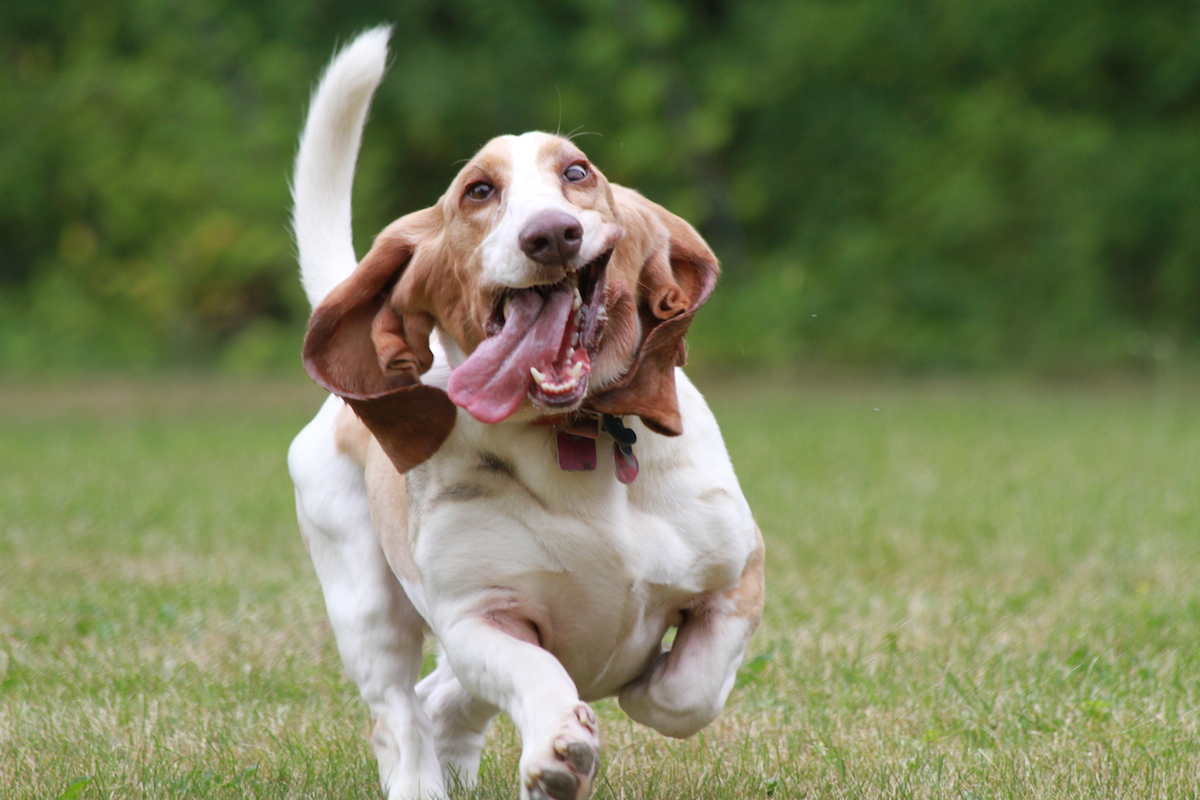Talking To And About Your Dog Online And In Real Life
I’ve always been fascinated by people “speak” on their dog’s behalf in a public way, especially when they do so online.


I’ve always been fascinated by people “speak” on their dog’s behalf in a public way, especially when they do so online. There are thousands of journals on the Internet purportedly written by dogs, many linked to dog-themed social networking systems like Dogster or the Facebook app, Dogbook. Their voices are uncannily similar: playful, enthusiastic, and endearingly dimwitted—the voice of a loving but backward child.
This is also the personality attributed to Clark Griswold, the German Shepherd star of a viral YouTube video in which the dog is teased playfully by his owner about not getting his favorite treats. Clark’s reactions, dubbed by his owner, are absurdly disconsolate. His engagingly credulity is shared by the unnamed bulldog of the website Text from Dog, whose messages to his owner swing from engagingly exuberant (“I have to tell you … You accidentally fed me TWICE this morning … I GOT TWO BREAKFASTS … THIS IS THE GREATEST DAY OF MY ENTIRE LIFE”), to coyly passive-aggressive (“Who’s MORE important: ME or your girlfriend?”). There seems to be some kind of unspoken agreement that, in terms of personality, dogs are adorably dense (as opposed, perhaps, to smart, snooty cats).
University of British Columbia dog behaviorist and psychologist Stanley Coren believes that dog blogging is “a sign of affection,” and “trying to adopt a dog’s point of view can be a healthy exercise” for pet owners. “If we love them dearly, we’re always trying to crawl inside their heads and figure out what’s going on,” suggests Coren. “And if we love them dearly enough, we want other people to share in the dog’s expertise.” This, to me, seems an oddly disingenuous response to a phenomenon that begs for deeper consideration. Surely it’s obvious—is it not?—that these dog blogs do not actually “adopt a dog’s point of view” or “share a dog’s expertise.” The fact is, dogs have very little to do with them. These daily chronicles, with their infantilized voices, present tense sentences and phonetic spelling, are produced by and for adult homo sapiens. There are no pets online, just projections and displacements, human fantasies, and a willful return to the affections and appetites of childhood.
In Pack of Two, author Caroline Knapp quotes Susan Cohen, director of counseling at New York’s Animal Medical Center, who is fascinated by the way people talk about (and on behalf of) their dogs “When someone offers what sounds like a human interpretation of a dog’s behavior,” says Cohen, “it gives you something to explore. It might not tell you a lot about the dog, but it helps tell you what the person is thinking, what they’re hoping, fearing, or feeling.” When the dog is owned by a couple, for example, its “voice” can be used by the “parents” to accuse one other of neglect (“Mommy found my long-lost tennis ball—you know, the one that Daddy lost and didn’t bother to replace”), or to see themselves as unconditionally lovable (“oh, Daddy’s dirty socks smell so good!”). At the most basic level, the “dog” here may be the blogger’s infant self, beloved by Mother without reservation, no matter how oddly they might look or smell. In the purported form of a dog, the infant self can express needs and feelings that the adult ego might, with good reason, want to distance itself from. On the Internet, no one knows you’re not a dog.
The same dynamic also applies to in-person interactions. Arnold Arluke and Clinton R. Sanders note how pet owners, when “deciphering” their animal’s symptom to veterinarians, will “explain” their companion’s moods (“She’s upset that we have a new baby”), speak dyadically (“We aren’t feeling well today,”), or speak for the animal itself (“Oh doctor, are you going to give me a shot?”). Whether online or face-to-face, to speak in the voice of your dog is to engage in an act of self-deceiving ventriloquism, allowing you to be at the same time both beloved child and adoring parent. In this voice, you can buffer complaints, elicit apologies, confess wrongdoings, and mediate outlawed or forbidden impulses.
I can’t help but notice that I’m writing about “your dog,” analyzing what “people” do. Writing in the second or third person is another way to create distance from things that feel uncomfortable for us—that is, for me—to confess. The truth is, I got so used to articulating my dog Grisby’s preferences that it was difficult to admit they’re not far from my own: He loved coffee cake but disliked asparagus, liked cartoons but got bored by foreign films, liked white bread but not tortillas.
Goofy dogs are like children with Down’s syndrome. Such children are famously lovable, but adults with the same condition are often shunned, especially since weight gain is a common side effect of neurological medication. Similarly, precocious children can be delightful, but infantile adults are disturbing, their sexual maturity sitting uncomfortably beside the child’s lack of self-restraint. In the same way, dog owners who write or speak as their dogs can only do so comfortably when their dogs are “fixed”; a blog or video giving human voice to a dog’s sexuality would not be cute, but unsettling. Chop off his balls, however, and he can be a fat child forever.
I can’t speak on behalf of other dog owners (or their dogs), but I suspect I gave Grisby a kind of goofy, childish personality as a way of connecting my adult and childhood selves. He was, in other words, a “transitional object”—a phrase coined by the child psychologist D.W. Winnicott to mean a personal possession, like a teddy bear or security blanket, which helps the child feel safe away from home. Transitional objects are not limited to childhood. Adults, too, need things that remind them of their private world: personal photographs used as screensavers, lucky charms, religious icons, sports mascots, anything with a stable meaning that can avert loneliness, mediating between the familiar world of home and the impersonal workplace or public realm.
Dogs make very handy transitional objects because we can use them as outlets for all kinds of different emotions. In my case, Grisby formed a bridge between my inner life and the “real world” out there—a world to which I’m increasingly ambivalent. On the one hand, I want to function successfully as an adult in the wider world; on the other hand, I want to stay at home, regress to infancy and keep the outside world at bay. For me, the transition from one world to the other got increasingly tough to make though it was certainly much easier with a friendly bulldog by my side. ![]()




